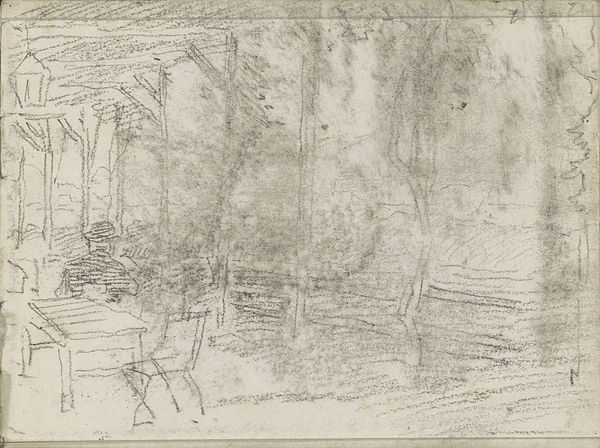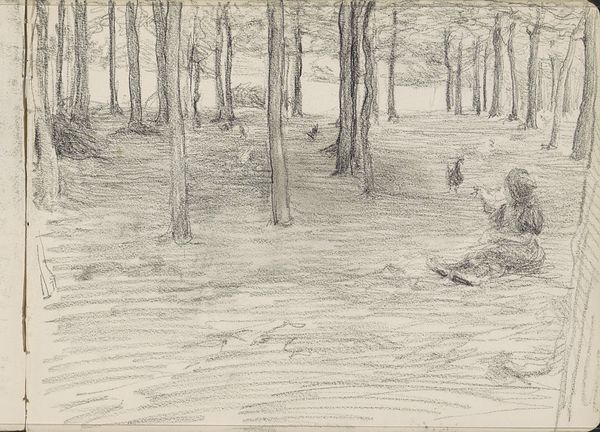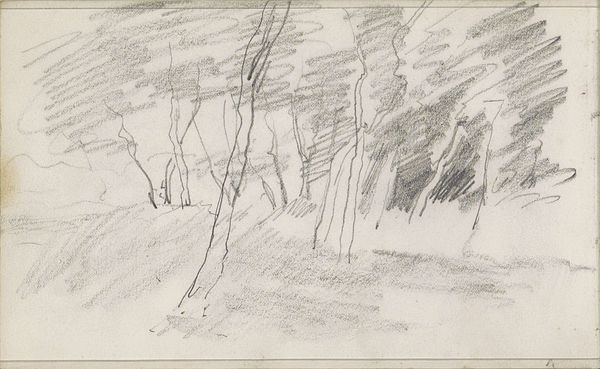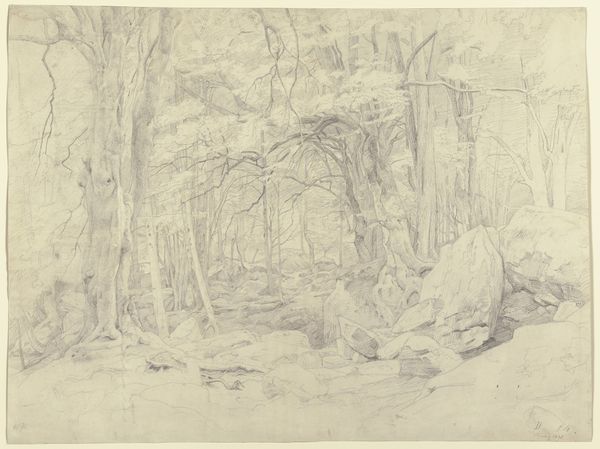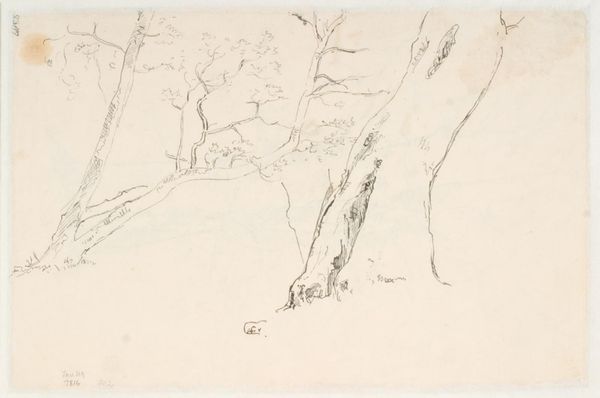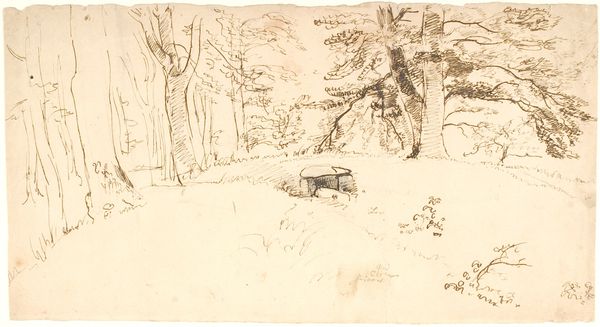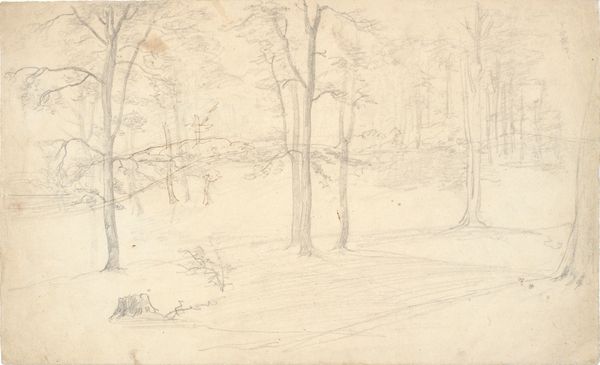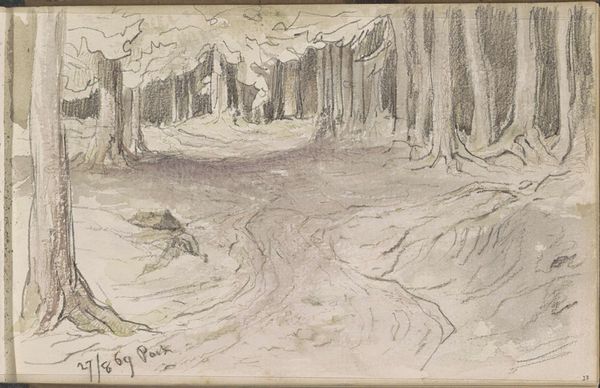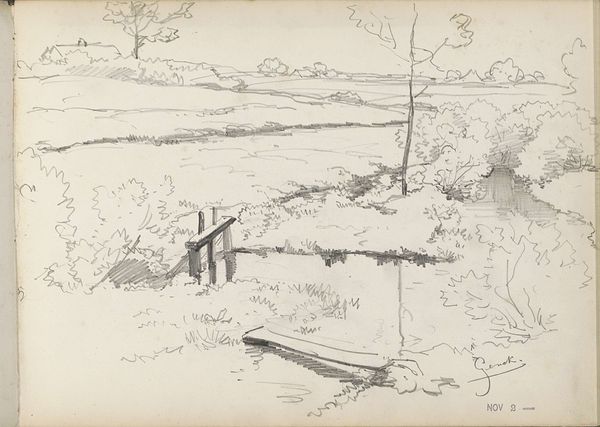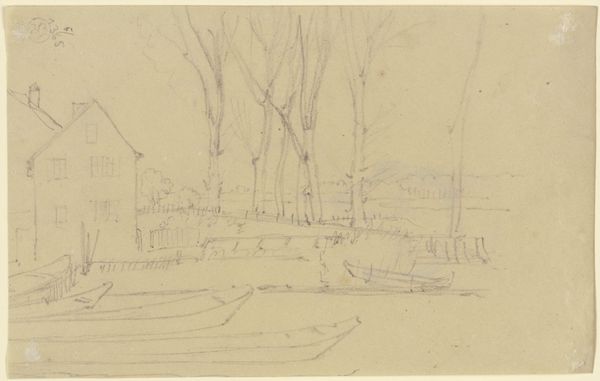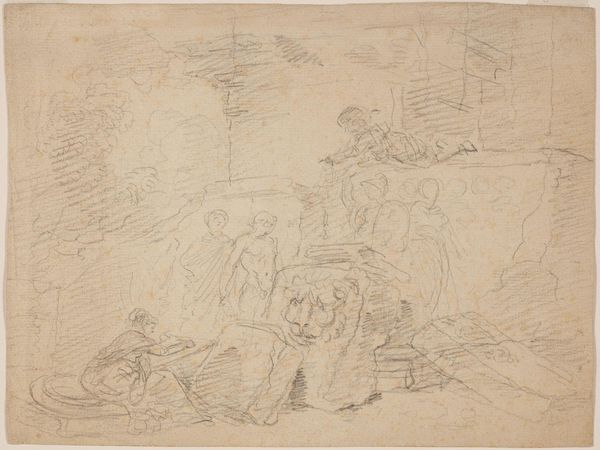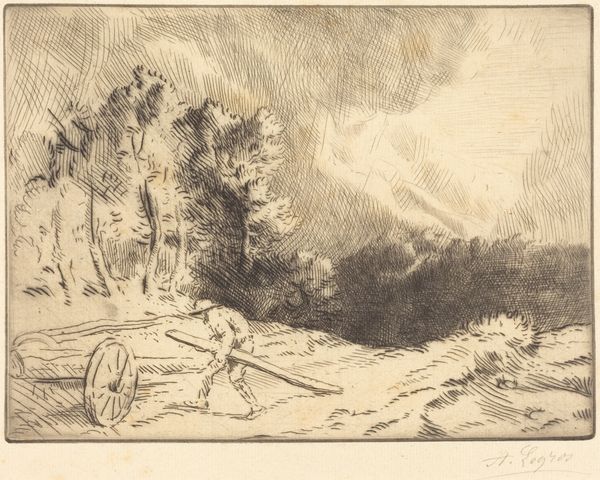
Forest Interior with Thatched Hut, and Other Sketches 1813 - 1814
0:00
0:00
drawing, print, paper, pencil, graphite
#
drawing
# print
#
pencil sketch
#
landscape
#
paper
#
form
#
sketch
#
romanticism
#
pencil
#
line
#
graphite
#
history-painting
#
realism
Dimensions: 174 × 228 mm
Copyright: Public Domain
Curator: Géricault's "Forest Interior with Thatched Hut, and Other Sketches," from around 1813-1814, presents us with a flurry of graphite on paper, currently residing at The Art Institute of Chicago. My initial impression is one of fragmented observation, a study of contrasts between the solid geometry of the hut and the organic chaos of the surrounding forest. Editor: I'm struck by how unsettled it feels, despite being a landscape. It's almost as if the artist is grappling with something – perhaps the tension between nature's idealized representation and the realities of rural life under a monarchy on the brink of historical changes, the beginnings of industrialism. The material poverty and social hierarchy are subtly hinted at. Curator: That’s a potent interpretation. I’m particularly interested in how Géricault manipulates graphite to achieve varying textures, contrasting smooth strokes for tree trunks with chaotic scribbles representing foliage. This choice in medium highlights both accessibility of material and efficiency of means. These quickly rendered studies provided preliminary exploration that later became resolved and monumental history paintings that explored socio-political ideas and Romantic ideals. Editor: It's essential to situate this within the broader socio-political framework of early 19th-century France, which saw enormous class conflicts and dramatic industrial development in addition to revolution and restoration. How does the ready availability of paper as a surface, along with graphite, democratize image-making in the way that it creates visibility for social marginalization? What does the intersection of class and gender mean when thinking about image economies and politics in the history of printmaking? Curator: That touches on the critical link between the artist's hand, the material affordances, and the ultimate articulation of narrative. He utilizes a traditional method but with rapid and efficient execution. The forest is actively made, worked, constructed with line and form, even as he suggests that it's "found." It suggests artistic labor. Editor: Exactly, and the inclusion of the figures beneath the forest scene suggests an inherent connection with people and land, a tie between the upper image of the shelter and its potential inhabitants below. Their clothing speaks of a specific era and circumstance; however lightly rendered, these sketches provide the base notes to what will later be social critique. How did this visual thinking influence the creation of prints for mass consumption, and who could participate in this commerce of imagery and production? Curator: A brilliant question! Focusing on process lets us examine those conditions, making this more than a simple romantic landscape sketch. It invites a layered analysis. Editor: Yes, this close attention helps unravel the complexities that link social inequities and material access – as if one illuminates the other in art history.
Comments
No comments
Be the first to comment and join the conversation on the ultimate creative platform.
